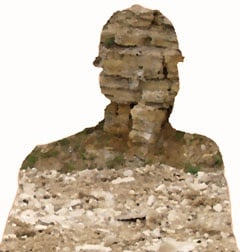The Rock Face : There is more British stone than you think
Stone Federation Great Britain’s Quarry Forum gives its opinion on issues relating to the stone industry from the point of view of companies that extract dimensional stone from opencast and underground quarries and mines.
One of the most commonplace misconceptions associated with indigenous British natural stone is that there is only a small range available. From this presumption, specifiers will often look abroad for a wider selection.
The reality is that British quarries can offer clients a wide range of textures and colours for almost all applications required. As the Stone Federation Quarry Forum, we promote the use of indigenous British Stone from all corners of our islands.
The most obvious question that arises from this new found revelation is: “Where do I start to look for British stones?”
A very good place is Stone Federation’s ‘Welcome to British Stones’ sourcing tool on its website (bit.ly/SFGB-quarries). Scroll down to the bottom half of the page and you will find a map with pins in it identifying the locations of quarries of Stone Forum members. It allows you to look through more than 80 different stones found in the British Isles. For each stone there is a sample image as well as an explanation of the stone’s application, colour and geology. Rather than trawling through website after website looking for the right stone, this allows you to access all the stones on one page.
The Quarry Forum also has a samples display board created from the stones listed on the website. This has always proved a hugely popular feature with architects and designers at trade shows such as the Natural Stone Show held earlier this year at ExCeL London.
The most common reaction was surprise at the variety of British stones available. This is an example of how the Quarry Forum is working to educate architects, designers and specifiers about just how much choice they have in stones found right on their doorsteps.
And the stones of the British Isles clearly are being widely used by leading architects, as was evidenced at the Stone Federation’s Natural Stone Awards in December. An incredible 97% of the projects entered used indigenous stone.
It’s also important to note that there are not the same ethical sourcing issues with British Stones that can occur with foreign alternatives.
Furthermore, as carbon footprints and environmentally friendly building solutions become an ever-increasing concern, locally sourced stone clearly does not require the amount of fuel to get to finished project as stone that has been transported thousands of miles.
Britain has a fantastic heritage of stone use helping to define the character of regions. There is granite and slate in Cornwall; limestone in Hampshire, Dorset and up through the Midlands and the Cotswolds; sandstone in the North; slate, granite and limestone in Wales; the ‘granite city’ of Aberdeen and Caithness sandstone from the far north of Scotland.
Many of London’s landmark buildings use Portland limestone quarried in Dorset, while large sections of Oxford are built of Clipsham stone and Bath is built of the stone to which it gives its name, won from its local mines.
From the restoration of ecclesiastical buildings and country mansions to new build hi-tec modern office blocks; from domestic and commercial interiors to hard landscaping… the answer is under your feet and at your fingertips.

